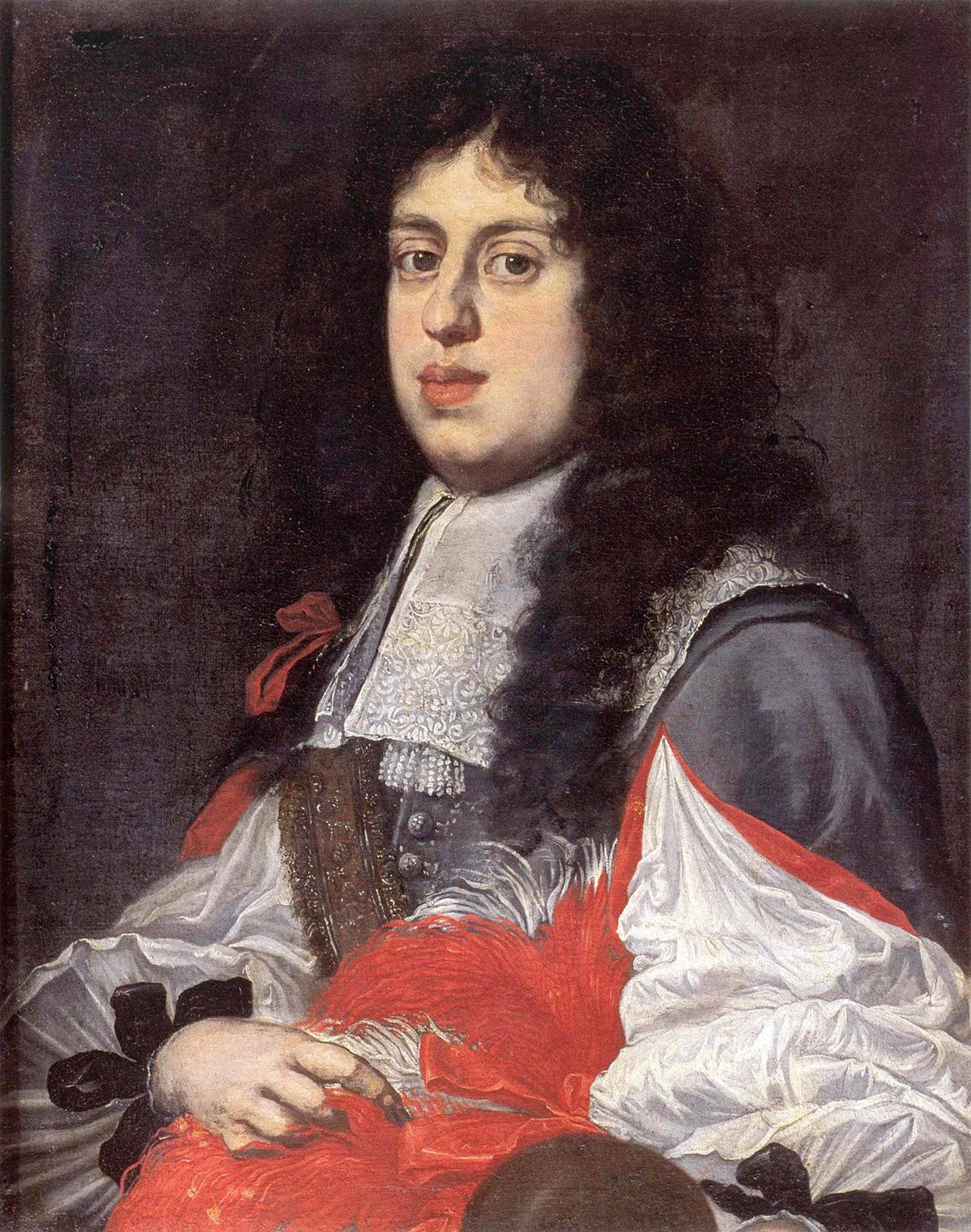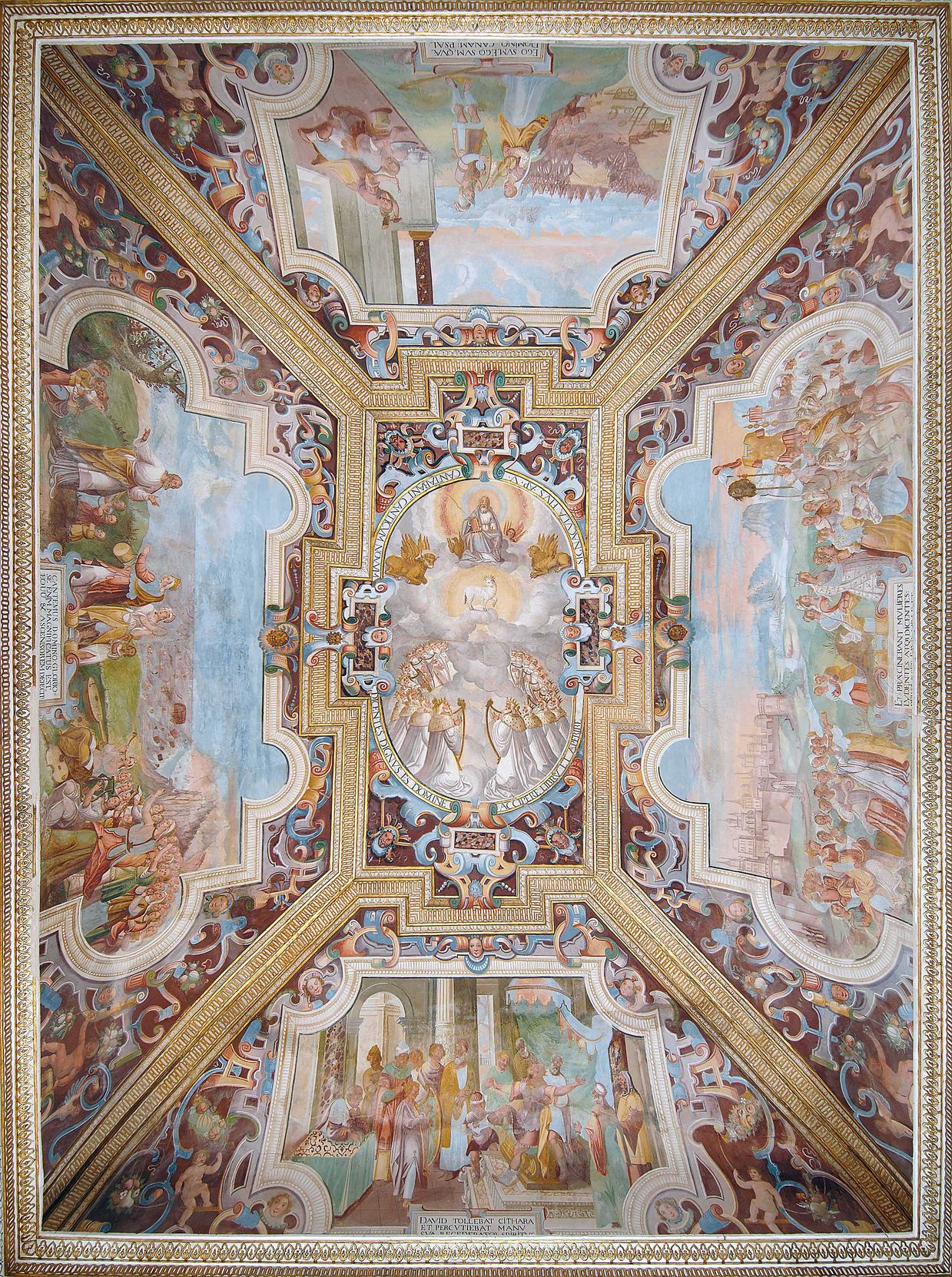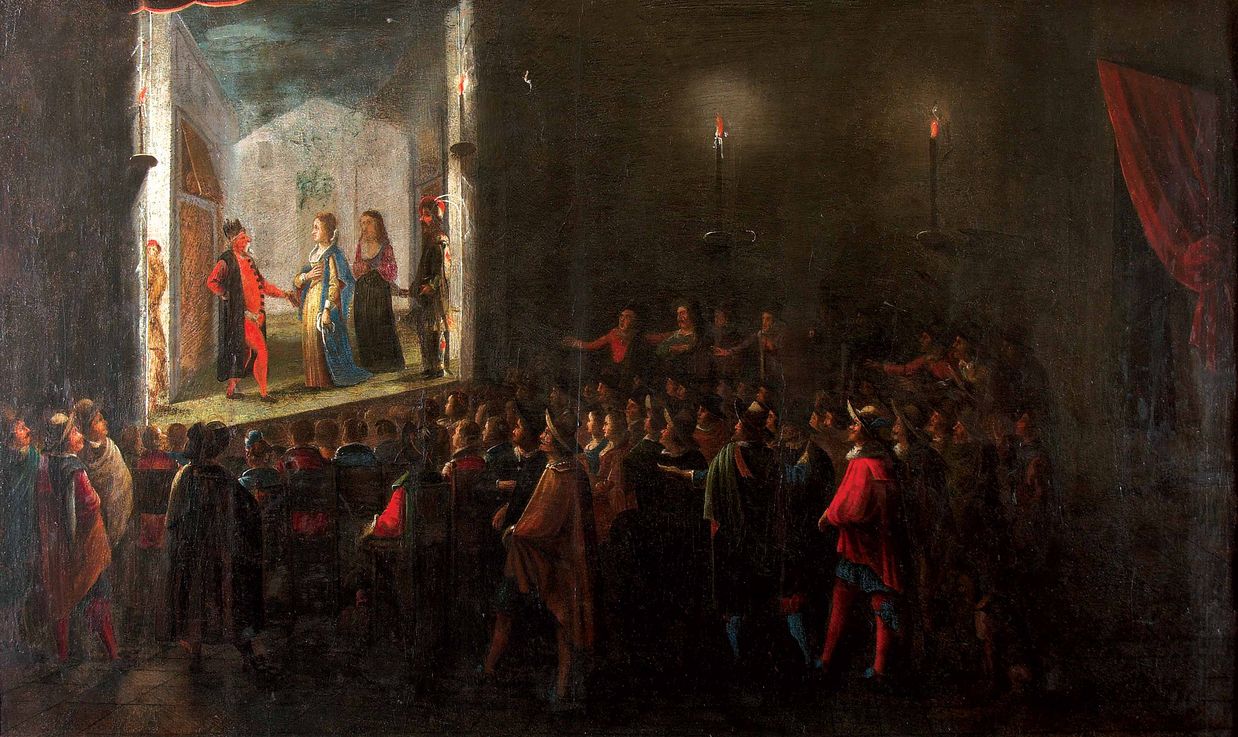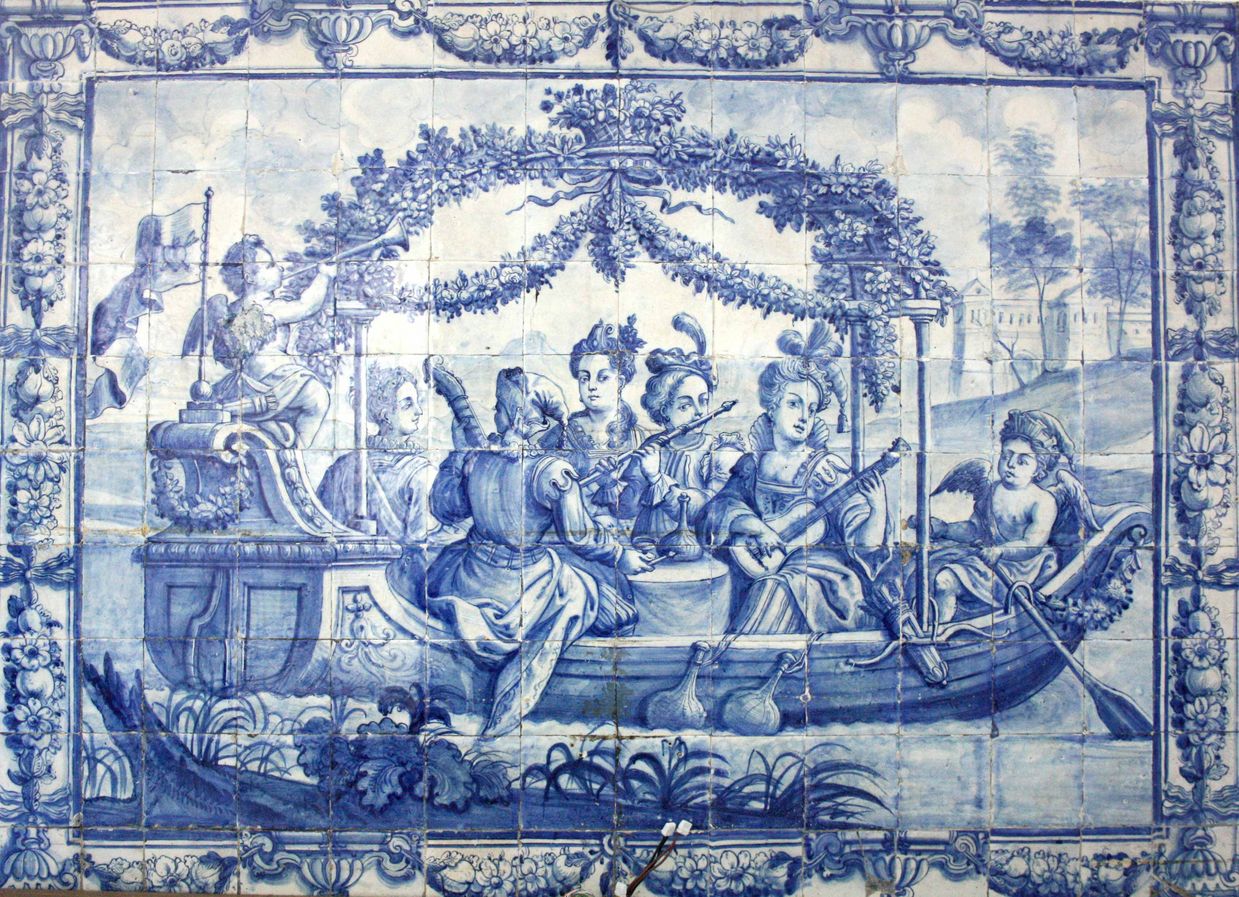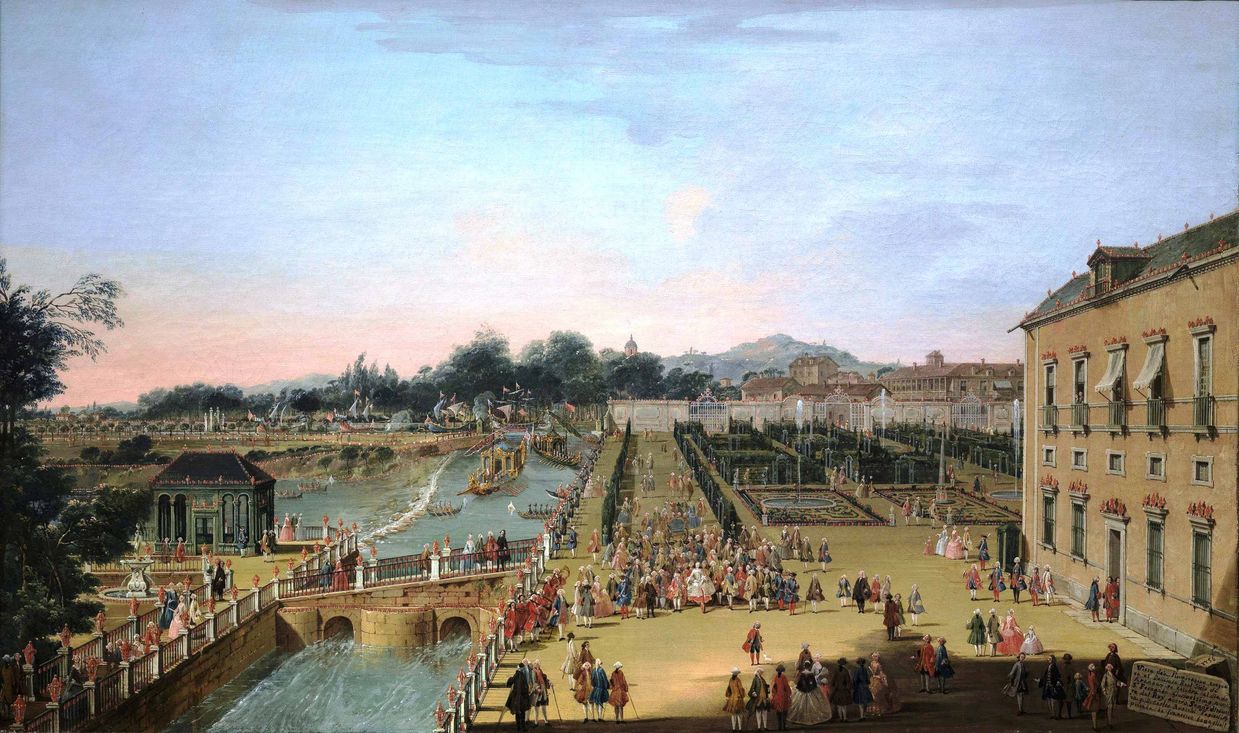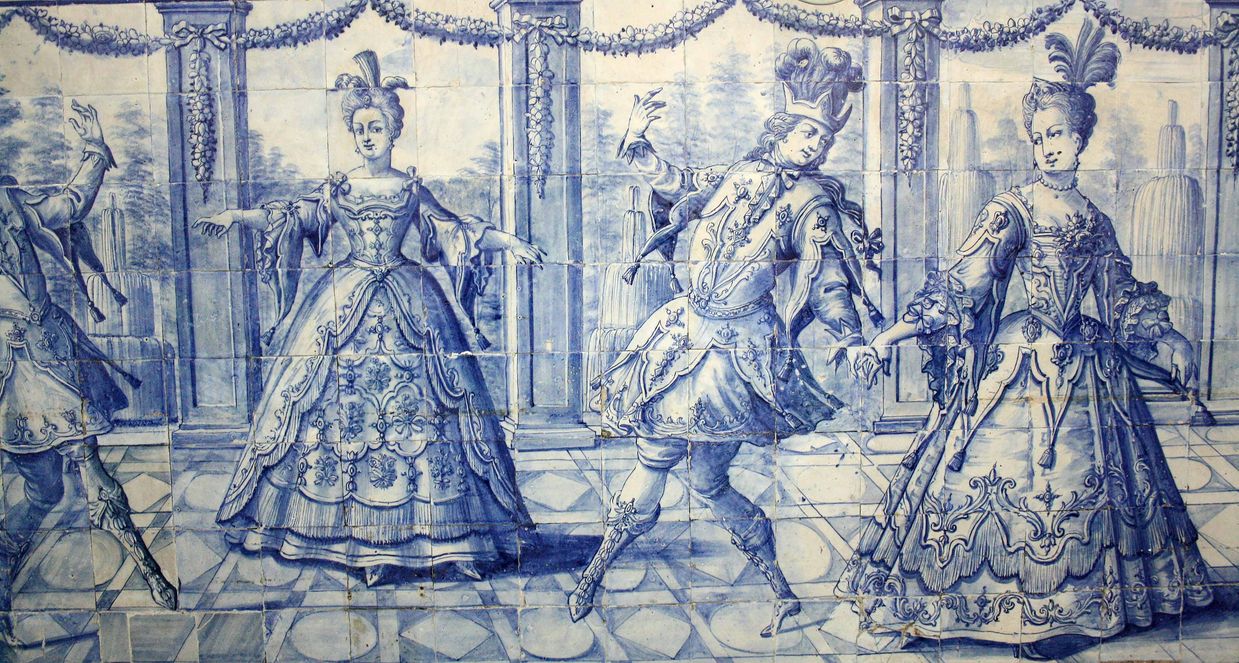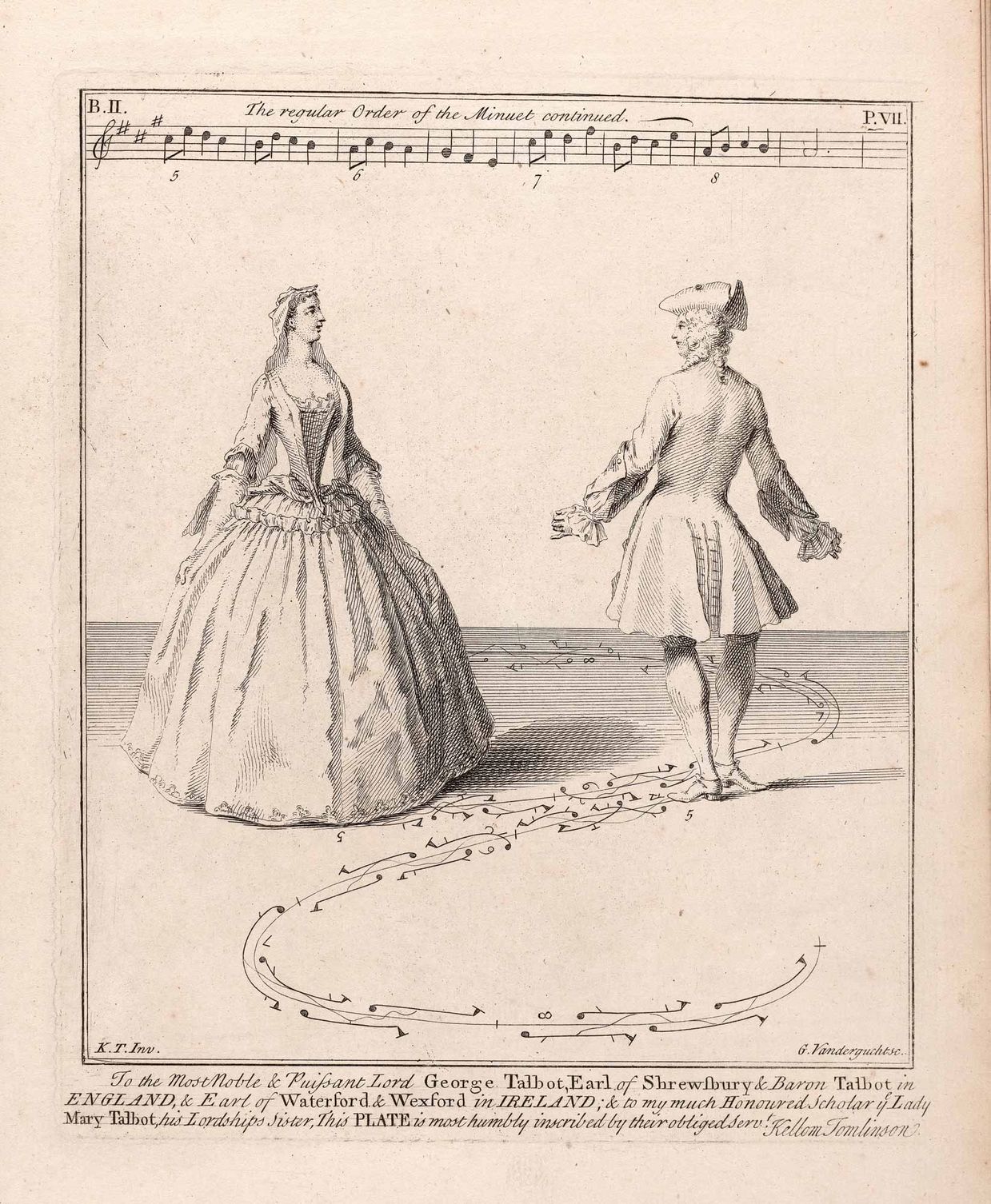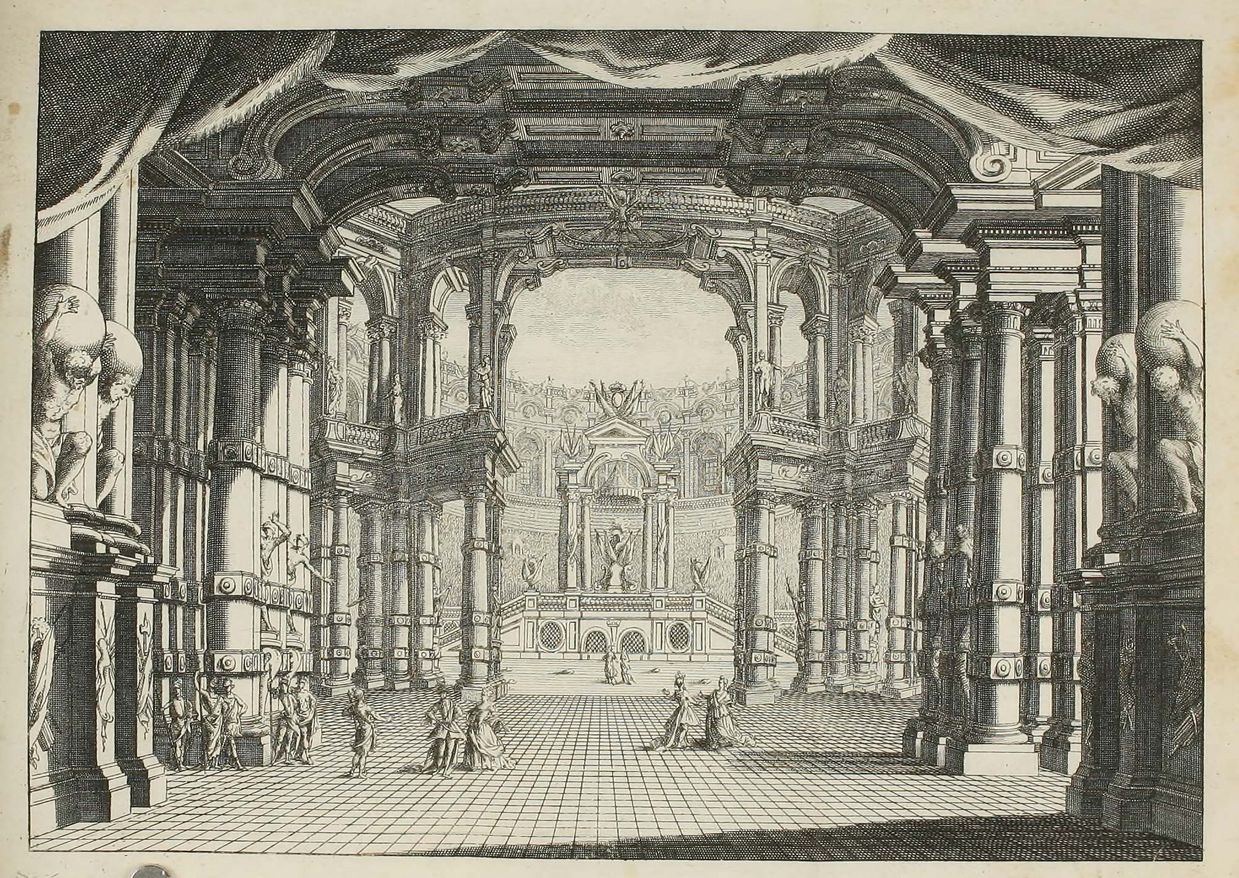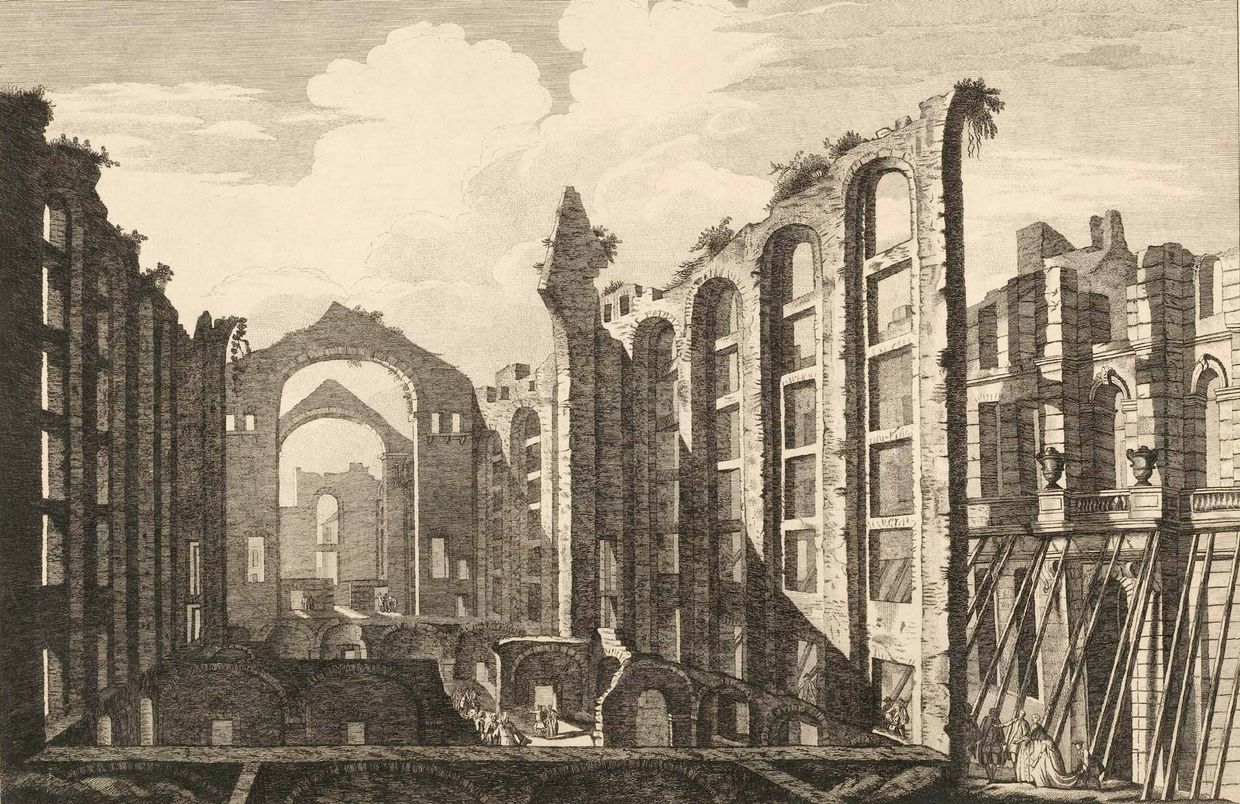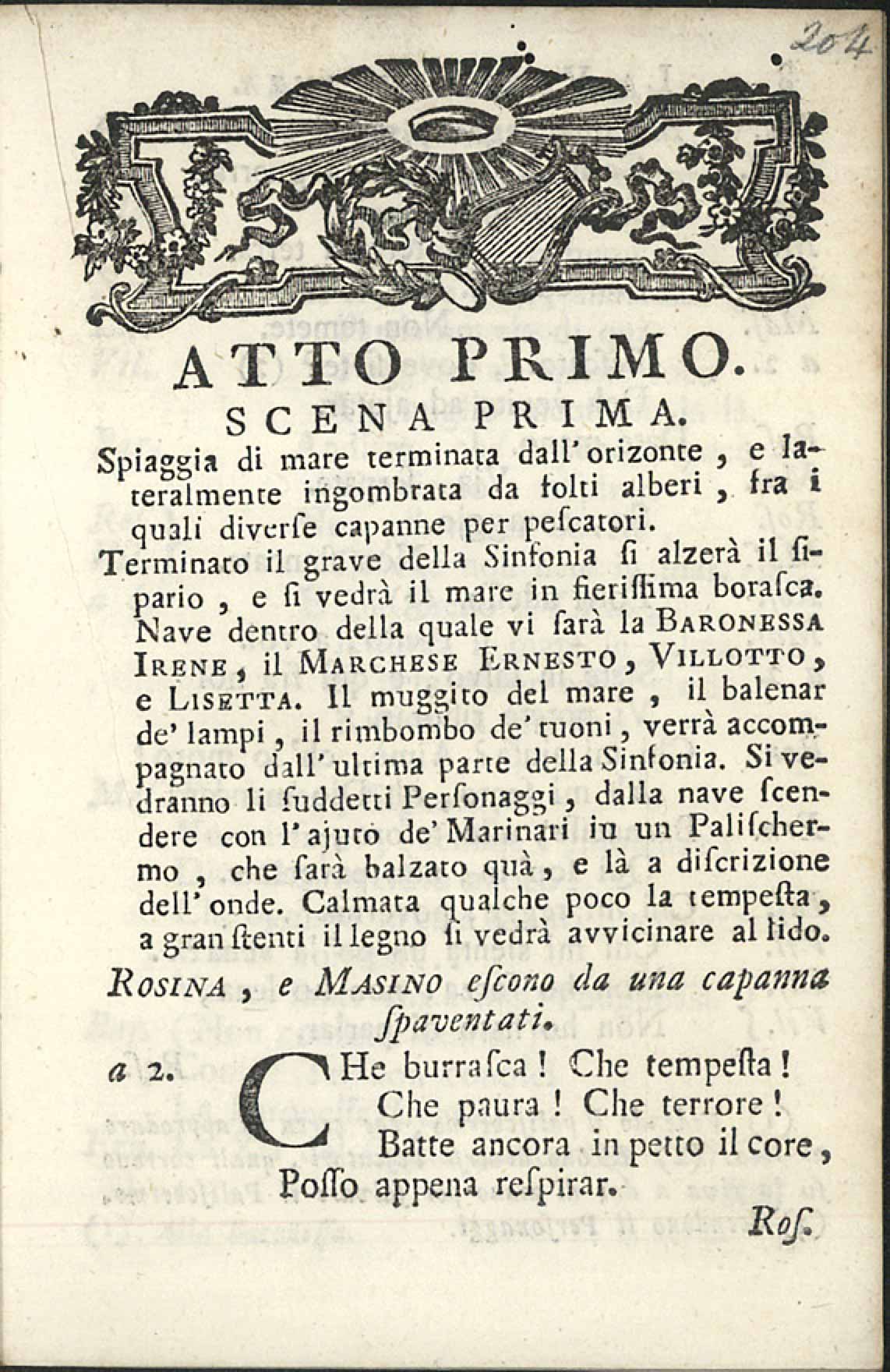Hearing in the
Early Modern Age
Iberian case studies
Cristina Fernandes • Giuseppina Raggi • Susana Varela Flor
Are you ready for a listening experience
?
Podcast
(Listening only)
Podcast in English
Podcast in Portuguese
Bibliography
Bianconi, Lorenzo e Maria Cristina Casali Predielli. 2018. “Corrado Giaquinto: Carlo Broschi detto il Farinelli”, in I ritratti del Museo della musica di Bologna da padre Martini al Liceo musicale. Firenze: Leo S. Olschki, pp. 103-124.
Carreras, Juan José. 2020. “Farinelli’s Dream: Theatrical Space, Audience and Political Function of Italian Court Opera in 18th-Century Madrid”, in Margaret SCHARRER et al. (eds.), Musiktheater im höfischen Raum des frühneuzeitlichen Europa: Hof – Oper – Architektur. Heidelberg: Heidelberg University Publishing, pp. 357-393.
Castro, Pedro Lopes e. 2018. “Música para a troca das princesas: Estudo comparativo das obras dramáticas comemorativas do duplo enlace entre as monarquias ibéricas (1785)”. Revista Portuguesa de Musicologia, v. 5, nº1 (2018), pp. 39-59.
Correia, Ana Paula Rebelo. 2000. “Fogos de Artifício e Artifícios de Fogo nos séculos XVII e XVIIII: A mais efémera das Artes efémeras”, Arte Efémera em Portugal – catálogo da exposição. João Castel-Branco PEREIRA (Coord.), Lisboa: Fundação Calouste Gulbenkian, 101-149.
Fernandes, Cristina (coord.). 2018. Dossier temático Música e poder real em Portugal no século XVIII: repertórios, práticas interpretativas e transferências culturais. Revista Portuguesa de Musicologia, vol. 5-1 (1ª parte): http://rpm-ns.pt/index.php/rpm/issue/view/31; vol. 5-2 (2ª parte): http://rpm-ns.pt/index.php/rpm/issue/view/32.
Fernandes, Cristina. 2018. "María Bárbara de Braganza y la cultura musical europea del siglo XVIII, in dossier Música de corte en feminino (coord. Judith Ortega)", Scherzo, Año XXXIII, nº 338 (Marzo 2018), pp. 77-81.
Fernandes, Cristina. 2022. "A Banda Real e outros agrupamentos de instrumentos de sopro e percussão ao serviço da monarquia (1707-1834): perfis profissionais, cerimonial de corte e práticas festivas". In Orquestrar utopias: música, associativismo e transformação social, ed. Maria do Rosário Pestana. Lisboa: Edições Colibri, pp. 115-146.
Flor, Susana et al. 2014. O Palácio Melo e Abreu: História, Património e Laboratório. Contributos para o estudo e salvaguarda do Azulejo de Lisboa, Bispo, Maria Teresa (coord.). Lisboa: Câmara Municipal de Lisboa, pp. 95-115.
Flor, Susana Varela. 2016. "Portraits by Feliciano de Almeida (1635-1694) in Cosimo III de' Medici's Gallery", RIHA Journal, 144: 1 – 37.
Flor, Susana Varela; Flor, Pedro. 2018. Retratos do Paço Ducal de Vila Viçosa, vol 6, Col. Livros de muitas Couzas, Monge, Maria de Jesus, (coord.). Caxias-Casa de Massarelos: Fundação da Casa de Bragança.
Flor, Susana Varela e Flor, Pedro. 2018. "Gabriel del Barco y Minusca pintor: elementos para uma visão prosopográfica da Lisboa Barroca". In La Sevilla Lusa, Quiles, Fernando, Fernández Chaves, Manuel e Conde, Antónia Fialho. Sevilla: unibRRC / Univ. Pablo Olavide, pp. 252-287.
Leza, José Máximo (ed.). 2014. Historia de la música en España e Hispanoamérica. La música en el siglo XVIII. Madrid: Fondo de Cultura Económica.
Machado, Diogo Barboza. 1747. Biblioteca Lusitana..., Tomo II. Lisboa: na Officina de Ignacio Rodrigues, pp. 765-766.
Mattoso, José (direção), António Manuel Hespanha (coordenador). 1998. História de Portugal. O Antigo Regime (1620-1807), vol. IV. Lisboa: Editorial Estampa.
MECO, José. 2003. A Divina Cintilação: talha, azulejos, mármores, chinoiseries. O Convento dos Cardaes – veios da Memória, Irmã Ana Maria Vieira; Teresa Raposo (Coord.). Lisboa: Edições Quetzal, pp. 116-.
Nery, Rui Vieira. 2008. “Vozes da Cidade: Música no Espaço Público de Lisboa no Final do Antigo Regime.” In Praças Reais: Passado, Presente e Futuro, coord. Miguel Figueira de Faria, 23-44. Lisboa: Livros Horizonte.
Lessa, Elisa, Pedro Moreira e Rodrigo Teodoro de Paula (eds.). 2020. Ouvir e escrever as paisagens sonoras: Abordagens teóricas e (multi)disciplinares. Braga: CEHUM – Universidade do Minho.
Paula, Rodrigo Teodoro de. 2018. “O ‘som brônzeo’ da morte: Poder e liturgia fúnebre a partir da torre sineira da Santa Igreja Patriarcal de Lisboa (1730-69)”. Revista Portuguesa de Musicologia, vol. 5, nº1, pp. 93-116.
Raggi, Giuseppina. 2020. O projeto de D. João V. Lisboa ocidental, Mafra e o urbanismo cenográfico de Filippo Juvarra. Lisboa: Caleidoscópio.
Raggi, Giuseppina, Luís Soares Carneiro (eds.). 2021. Filippo Juvarra, Domenico Scarlatti e il ruolo delle donne nella promozione dell’opera in Portogallo. Roma: Artemide.
Raggi, Giuseppina. 2018. “Trasformare la cultura di corte: La regina Maria Anna d’Asburgo e l’introduzione dell’opera italiana in Portogallo”, RPM. Revista Portuguesa de Musicologia, 5/1: 18-38. Disponível in: https://rpm-ns.pt/index.php/rpm/article/view/339/572 (acesso 10.8.2023).
Sá, Vanda de e Antónia Fialho Conde (eds.). 2019. Paisagens sonoras urbanas: História, Memória e Património [online]. Évora: Publicações do Cidehus. Disponíveis aqui: https://pasev.hcommons.org/outputs/books/
Serrão, Vítor. 2008. O Fresco Maneirista do Paço de Vila Viçosa (1540-1649). Caxias-Casa de Massarelos:Fundação da Casa de Bragança.
Tedim, José Manuel. 2000. “O Triunfo da Festa Barroca. A Troca das Princesas. Arte Efémera em Portugal – catálogo da exposição, João Castel-Branco PEREIRA (coord.), Lisboa: Fundação Calouste Gulbenkian, pp. 174-215.
Tércio, Daniel. 1999. Dança e Azulejaria no Teatro do Mundo. Lisboa: Inapa.
Musical pieces and sounds
Musical Piece 1
Guillaume-Gabriel Nivers (1632-1714), Deuxième livre d'orgue contenant la Messe et les hymnes de l'Église: N. 22, L’hymne de la Nativité de nostre Seigneur à Laudes “A solis ortus cardine”
CD Motets & Hymnes de l'Eglise. Les Demoiselles de Saint-Cyr · Emmanuel Mandrin
Centre de Musique Baroque de Versailles/Auvidis France, 1997
Musical Piece 2
Gaspar Sanz (1640-1710), from: “Instruccion de musica sobre la guitarra española”, Libro I: Gran Duque de Florencia
CD Sanz / Murcia: Spanish Guitar Music · Jakob Lindberg
BIS-CD-899, 2000
Musical Piece 3
Anthony Holborne (c. 1545-1602), Pavan: Bona Speranza
CD Anthony Holborne: The Teares Of The Muses 1599. Hespèrion XXI · Jordi Savall
Alia Vox, 2000
Musical Piece 4
João Lourenço Rebelo (1610-1665), Super aspidem
CD A Golden Age of Portuguese Music. The Sixteen · Harry Christophers (dir.)
CORO, 2004
Musical Piece 5
Excerpt Theatre and Music: Calderón de la Barca, La Vida es Sueño
Compañía Nacional de Teatro Clásico
Sounds 6: Sounds of war (from https://freesound.org/)
Musical Piece 7
Joan Cabanilles (1644-1712)/J. C. Kerll, Batalla Imperial
CD Joan Cabanilles (1644-1712). Batalles, Tientos & Passacalles
Hespèrion XX · Jordi Savall (dir.)
Alia Vox, 1998
Sounds 8: Festive bells, cannon salutes (from https://freesound.org/)
Musical Piece 8
Johann Joseph Fux (1660-1741), Serenada in C major K.352: Fanfare ex C
Armonico Tributo Austria · Lorenz Duftschmid
CD Fux: Concentus Musico-instrumentalis (Opus primum)
Arcana, 2009
Musical Piece 9
Francisco Martins (ca. 1620/25-1680), Vilancico “Sentada ao pé de hum rochedo”
CD Villancicos de Portugal
A Corte Musical · Rogério Gonçalves
Glossa cabinet, 2021
Musical Piece 10
Giovanni Bononcini (1670-1747), Aria “Pur ti riveggio”
CD La nemica d'amore fatta amante, Serenata a 3
Ensemble 415 · Martin Oro (contratenor), Chiara Banchini (dir.)
Zig-Zag Territoires, 2002
Musical Piece 11
Domenico Scarlatti (1685-1757), Te Deum a 8
CD Iste Confessor - The Sacred Music of Domenico Scarlatti
The Sixteen · Harry Christophers
The Sixteen Productions Ltd, 2001
Musical Piece 12
Domenico Scarlatti (1685-1757), Sonata K. 27
Domenico Scarlatti. Complete Keyboard Works
Scott Ross (harpsichord)
Erato, 1988
Sounds 13_1: Sounds of a river (from https://freesound.org/)
Musical Piece 13
Nicola Porpora (1686-1768), Aria for Farinelli “Le limpid onde”, opera Ifigenia in Aulide
CD Dramma. La magnifica comunita · Enrico Gasazza, Simone Kermes (soprano)
Sony Classical, 2012
Musical Piece 14
José de Nebra (1702-1768), “Ay, amor, ay, Clelia mía”, from Amor aumenta el valor, Acto I, Escena 9
CD José de Nebra. Amor aumenta el valor
Los Músicos de Su Alteza · Luis Antonio González (dir.), Olalla Alemán (soprano)
Alpha/Sesquialtera S. L., 2010
Musical Piece 15
Carlos Seixas (1704-1742), Menuet from Sonata nº 37
Ensemble Alletamento · Mario Braña (violín barroco), Elsa Pidre (violonchelo barroco)
Recorded in Casa da Granja, Amarante (Portugal), 29/04/2022. Grabación: Adriana Romero
Sounds 16: Sound recreation of the Patriarchal Bells. Edited by Rodrigo Teodoro de Paula, from the teatry Altissonância Sacra Restaurada, by Antonio Rodrigues Lages (Biblioteca Nacional de Portugal, MM 5999).
Musical Piece 17
Antonio Mazzoni (1717-1785), “Tu m'involasti un regno”, Aria from the opera Antigono (Ópera do Tejo)
Divino Sospiro · Enrico Onofri (dir.), Michael Spyres (“baritenor”)
Dynamic, 2014
[In Step 18 there is no musical piece, so we move from 17 to 19]
Musical Piece 19
Nicola Conforto (1718-1793), Aria “Se d'amor, se di contento”, opera La Nitteti
CD Caro Gemello. Farinelli and Metastasio
Concerto Köln · Valer Sabadus
Sony Music, 2018
Sounds 20: Sounds of the earthquake (https://freesound.org/)
Musical Piece 22
Jerónimo Francisco de Lima (1741-1822), Overture, opera La Vera Constanza (1785), 3º and. [Sea Storm]
CD Rabbia, furor, dispetto. Sinfonie ed arie
Concentus Peninsulae · Monika Mauch (soprano)· Vasco Negreiros (dir.)
Paraty, 2015
Musical Piece/Sounds 23
Cortege: Royal Band, horses, artillery + Sonata nº1 (Musical Collection of the Coach Museum, Lisbon). Edited by Rodrigo Teodoro de Paula
CD The Silver Trumpets of Lisbon And Lusitanian Music).
Trompetenensemble - Edward Tarr
Musical Piece 25
Blas de Laserna (1751-1816), Contradanza del Aire
CD Música en tiempos de Goya
La Real Cámara · Emilio Moreno (dir.)
Glossa, 1996
Musical Piece 25
Santiago de Murcia (1673-1739), Fandango
CD Santiago de Murcia: entre dos almas. Stefano Maiorana (baroque guitar)
Arcana, Outhere Music, 2021
Sounds 26: Sounds of exotic Birds (https://freesound.org/)
Musical Piece 27
Lundu para noite de Santa Ana
CD Lundu de Marruá (Modinhas e Lundus, Séc. XVIII e XIX). Lira D'Orfeo
Paulus digital, 2007
Credits
| Title | Hearing in the early modern age: Iberian case studies |
| Coordination | Cristina Fernandes |
| Authors | Cristina Fernandes, Giuseppina Raggi, Susana Varela Flor |
| English proofreading | Alexander McCargar |
| Voice | Rebecca Christoforo |
Listening
with visual accompaniment
(On mobile: text only, no sound)
Convent of the Cardaes
Rua do Século, Lisbon
Guillaume-Gabriel Nivers (1632-1714), Deuxième livre d'orgue contenant la Messe et les hymnes de l'Église: N. 22, L’hymne de la Nativité de nostre Seigneur à Laudes “A solis ortus cardine”
CD Motets & Hymnes de l’Eglise. Les Demoiselles de Saint-Cyr. Emmanuel Mandrin
Centre de Musique Baroque de Versailles/Auvidis France, 1997
Animation created with AI
Justus Sustermans, Portrait of Cosimo de Médici, 1660. Florence, Pitti Palace, Galleria Palatina, Wikimedia Commons.
Gaspar Sanz (1640-1710), from: “Instruccion de musica sobre la guitarra española”, Libro I: Gran Duque de Florencia.
CD Sanz / Murcia: Spanish Guitar Music · Jakob Lindberg
BIS-CD-899, 2000.
Anthony Holborne (c. 1545-1602), Pavane: Bona Speranza
CD Anthony Holborne: The Teares Of The Muses 1599. Hespèrion XXI · Jordi Savall
Alia Vox, 2000.
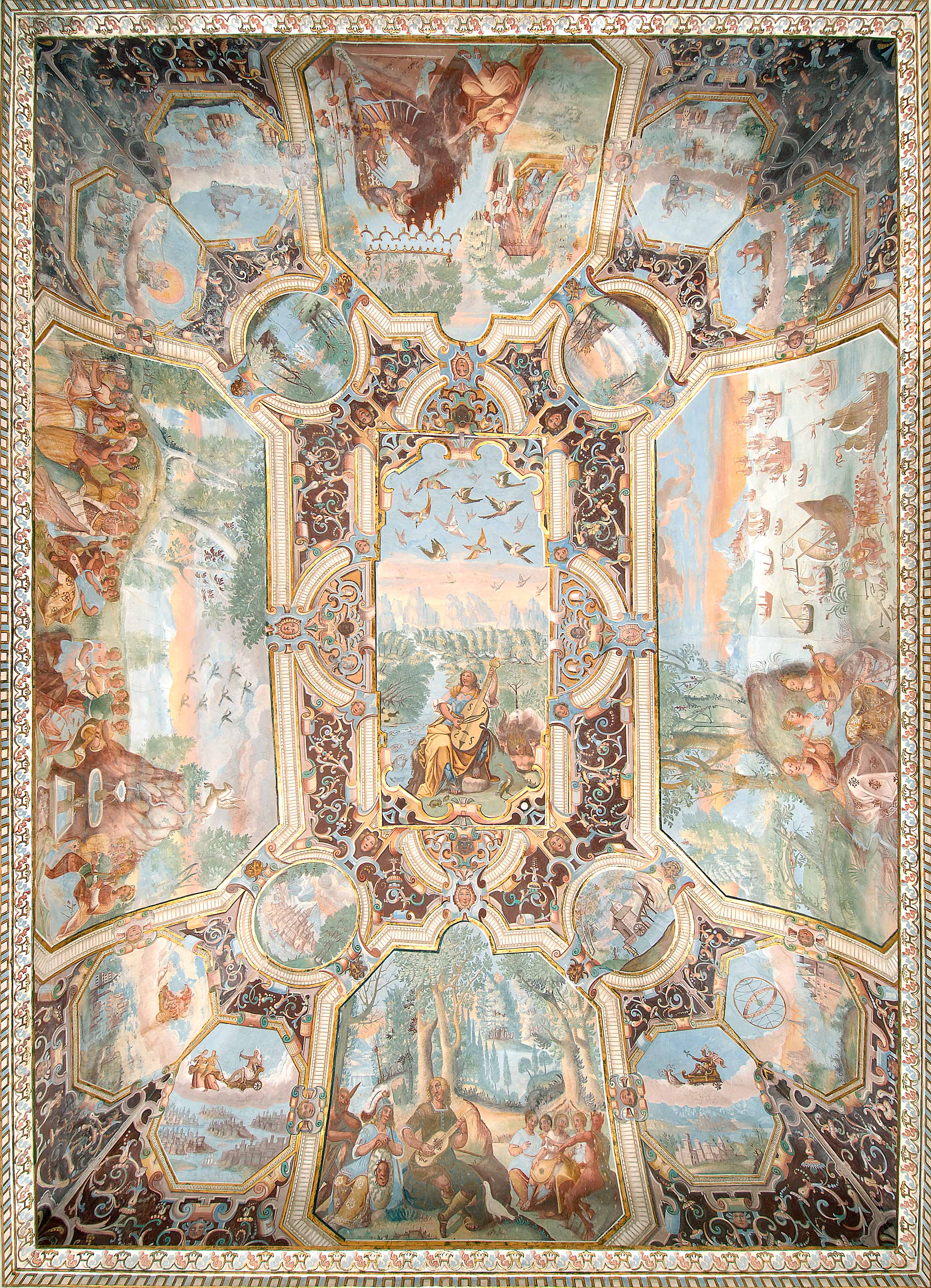
Profane Music Room, Paço Ducal de Vila Viçosa, © J.Real Andrade / MBCB, Arquivo Fotográfico
Joan Cabanilles (1644-1712)/J. C. Kerll, Batalla Imperial
CD Joan Cabanilles. Batalles, Tientos & Passacalles
Hespèrion XX · Jordi Savall (dir.)
Alia Vox, 1998
Sounds of war (https://freesound.org/)
Johann Joseph Fux (1660-1741), Serenada in C major K.352: Fanfare ex C
Armonico Tributo Austria · Lorenz Duftschmid
CD Fux: Concentus Musico-instrumentalis (Opus primum)
Arcana, 2009
Festive bells, cannon salutes (https://freesound.org/)
Francisco Martins (ca. 1620/25-1680), Vilancico “Sentada ao pé de hum rochedo”
CD Villancicos de Portugal
A Corte Musical · Rogério Gonçalves
Glossa cabinet, 2021
Giovanni Bononcini (1670-1747), Aria “Pur ti riveggio” CD La nemica d'amore fatta amante, Serenata a 3
Ensemble 415 · Martin Oro (contratenor), Chiara Banchini (dir.)
Zig-Zag Territoires, 2002
Domingo Antonio Velasco, Portrait of Domenico Scarlatti, c. 1738. Casa dos Patudos, Museu de Alpiarça. Public Domain– Creative Commons.
Domenico Scarlatti (1685-1757), Te Deum a 8
CD Iste Confessor – The Sacred Music of Domenico Scarlatti
The Sixteen · Harry Christophers
The Sixteen Productions Ltd, 2001
Nicola Porpora (1686-1768), Aria for Farinelli “Le limpid onde”, opera Ifigenia in Aulide
CD Dramma. La magnifica comunità · Enrico Gasazza, Simone Kermes (soprano)
Sony Classical, 2012
Sound of a river (https://freesound.org/)
José de Nebra (1702-1768), “Ay, amor, ay, Clelia mía”, from Amor aumentaelvalor, Acto I, Escena 9
CD José de Nebra. Amor aumentaelvalor
Los Músicos de Su Alteza · Luis Antonio González (dir.), Olalla Alemán (soprano)
Alpha/Sesquialtera S. L., 2010
Carlos Seixas (1704-1742), Menuet from Sonata nº. 37
Ensemble Alletamento · Mario Braña (baroque violin), Elsa Pidre (baroque cello)
Concert given at Casa da Granja, Amarante (Portugal), 29/04/2022. Recording: Adriana Romero
Nicolau de Freitas (attr.), Dance scene – Tiled panel at Palácio Melo, Lisbon. C. 1730. Lisbon, Gabinete do Património Cultural – Centro Hospitalar Universitário Lisboa Central (CHULC).
Francisco Zuzarte, Vista de Lisboa en se reprezenta o Palacio de Sª Magestade Fedilissima conforme estava na vespara dterumoto de 1755, 1787. Lisbon, Museo de Lisboa, Inv. MC.DES.0837.
Sonic Recreation of the Patriarch’s Bells (Lisbon).
Edited and published by Rodrigo Teodoro de Paula, based on the treatise Altissonância Sacra Restaurada by A. R. Lages (Lisbon, Biblioteca Nacional de Portugal, MM 5999).
Antonio Mazzoni (1717-1785), “Tu m'involasti un regno”, Aria from the opera Antigono (Ópera do Tejo)
CD DivinoSospiro · Enrico Onofri (dir.), Michael Spyres (“baritenor”)
Dynamic, 2014
Corrado Giaquinto, Portrait of Farinelli, c. 1746, Bologna, Museo della Musica.
Nicola Conforto (1718-1793), Aria “Se d'amor, se di contento”, opera La Nitteti
CD Caro Gemello. Farinelli and Metastasio
Concerto Köln · Valer Sabadus
Sony Music, 2018
Earthquake sounds (https://freesound.org/)
Jerónimo Francisco de Lima (1741-1822), Overture, opera La Vera Constanza (1785), 3º mov. [storm at sea]
CD Rabbia, furor, dispetto. Sinfonie ed arie
Concentus Peninsulae · Monika Mauch (soprano)· Vasco Negreiros (dir.)
Paraty, 2015
Cortege: Royal Band, horses, artillery + Sonata nº1 (Musical Collection of the Coach Museum, Lisbon). Edited by Rodrigo Teodoro de Paula
CD The Silver Trumpets of Lisbon And Lusitanian Music
Trumpet ensemble – Edward Tarr
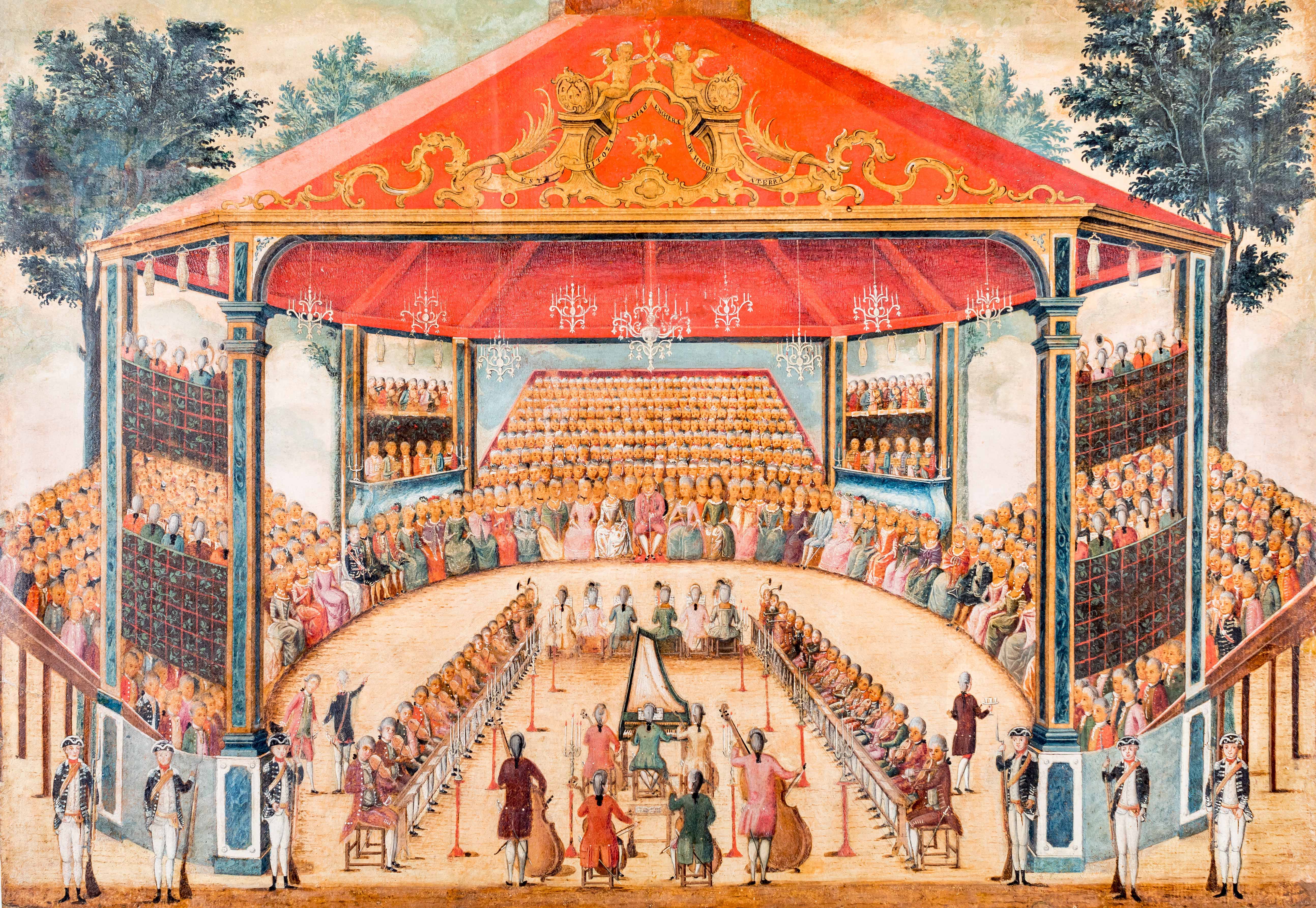
Domenico Muzzi (attr.), Serenade in Madrid promoted by the Ambassador of Portugal, Marquis of Louriçal. Queluz, Palácio Nacional de Queluz, Maria Keil Collection, PNQ 3933. © PSML_Luís Duarte.
Blas de Laserna (1751-1816), Contradanza del Aire
CD Música en tiempos de Goya
La Real Cámara · Emilio Moreno (dir.)
Glossa, 1996
Lundu para noite de Santa Ana
CD Lundu de Marruá (Modinhas e Lundus, Séc. XVIII e XIX). Lira D'Orfeo
Paulus digital, 2007
Bibliography
Bianconi, Lorenzo e Maria Cristina Casali Predielli. 2018. “Corrado Giaquinto: Carlo Broschi detto il Farinelli”, in I ritratti del Museo della musica di Bologna da padre Martini al Liceo musicale. Firenze: Leo S. Olschki, pp. 103-124.
Carreras, Juan José. 2020. “Farinelli’s Dream: Theatrical Space, Audience and Political Function of Italian Court Opera in 18th-Century Madrid”, in Margaret SCHARRER et al. (eds.), Musiktheater im höfischen Raum des frühneuzeitlichen Europa: Hof – Oper – Architektur. Heidelberg: Heidelberg University Publishing, pp. 357-393.
Castro, Pedro Lopes e. 2018. “Música para a troca das princesas: Estudo comparativo das obras dramáticas comemorativas do duplo enlace entre as monarquias ibéricas (1785)”. Revista Portuguesa de Musicologia, v. 5, nº1 (2018), pp. 39-59.
Correia, Ana Paula Rebelo. 2000. “Fogos de Artifício e Artifícios de Fogo nos séculos XVII e XVIIII: A mais efémera das Artes efémeras”, Arte Efémera em Portugal – catálogo da exposição. João Castel-Branco PEREIRA (Coord.), Lisboa: Fundação Calouste Gulbenkian, 101-149.
Fernandes, Cristina (coord.). 2018. Dossier temático Música e poder real em Portugal no século XVIII: repertórios, práticas interpretativas e transferências culturais. Revista Portuguesa de Musicologia, vol. 5-1 (1ª parte): http://rpm-ns.pt/index.php/rpm/issue/view/31; vol. 5-2 (2ª parte): http://rpm-ns.pt/index.php/rpm/issue/view/32.
Fernandes, Cristina. 2018. "María Bárbara de Braganza y la cultura musical europea del siglo XVIII, in dossier Música de corte en feminino (coord. Judith Ortega)", Scherzo, Año XXXIII, nº 338 (Marzo 2018), pp. 77-81.
Fernandes, Cristina. 2022. "A Banda Real e outros agrupamentos de instrumentos de sopro e percussão ao serviço da monarquia (1707-1834): perfis profissionais, cerimonial de corte e práticas festivas". In Orquestrar utopias: música, associativismo e transformação social, ed. Maria do Rosário Pestana. Lisboa: Edições Colibri, pp. 115-146.
Flor, Susana et al. 2014. O Palácio Melo e Abreu: História, Património e Laboratório. Contributos para o estudo e salvaguarda do Azulejo de Lisboa, Bispo, Maria Teresa (coord.). Lisboa: Câmara Municipal de Lisboa, pp. 95-115.
Flor, Susana Varela. 2016. "Portraits by Feliciano de Almeida (1635-1694) in Cosimo III de' Medici's Gallery", RIHA Journal, 144: 1 – 37.
Flor, Susana Varela; Flor, Pedro. 2018. Retratos do Paço Ducal de Vila Viçosa, vol 6, Col. Livros de muitas Couzas, Monge, Maria de Jesus, (coord.). Caxias-Casa de Massarelos: Fundação da Casa de Bragança.
Flor, Susana Varela e Flor, Pedro. 2018. "Gabriel del Barco y Minusca pintor: elementos para uma visão prosopográfica da Lisboa Barroca". In La Sevilla Lusa, Quiles, Fernando, Fernández Chaves, Manuel e Conde, Antónia Fialho. Sevilla: unibRRC / Univ. Pablo Olavide, pp. 252-287.
Leza, José Máximo (ed.). 2014. Historia de la música en España e Hispanoamérica. La música en el siglo XVIII. Madrid: Fondo de Cultura Económica.
Machado, Diogo Barboza. 1747. Biblioteca Lusitana..., Tomo II. Lisboa: na Officina de Ignacio Rodrigues, pp. 765-766.
Mattoso, José (direção), António Manuel Hespanha (coordenador). 1998. História de Portugal. O Antigo Regime (1620-1807), vol. IV. Lisboa: Editorial Estampa.
MECO, José. 2003. A Divina Cintilação: talha, azulejos, mármores, chinoiseries. O Convento dos Cardaes – veios da Memória, Irmã Ana Maria Vieira; Teresa Raposo (Coord.). Lisboa: Edições Quetzal, pp. 116-.
Nery, Rui Vieira. 2008. “Vozes da Cidade: Música no Espaço Público de Lisboa no Final do Antigo Regime.” In Praças Reais: Passado, Presente e Futuro, coord. Miguel Figueira de Faria, 23-44. Lisboa: Livros Horizonte.
Lessa, Elisa, Pedro Moreira e Rodrigo Teodoro de Paula (eds.). 2020. Ouvir e escrever as paisagens sonoras: Abordagens teóricas e (multi)disciplinares. Braga: CEHUM – Universidade do Minho.
Paula, Rodrigo Teodoro de. 2018. “O ‘som brônzeo’ da morte: Poder e liturgia fúnebre a partir da torre sineira da Santa Igreja Patriarcal de Lisboa (1730-69)”. Revista Portuguesa de Musicologia, vol. 5, nº1, pp. 93-116.
Raggi, Giuseppina. 2020. O projeto de D. João V. Lisboa ocidental, Mafra e o urbanismo cenográfico de Filippo Juvarra. Lisboa: Caleidoscópio.
Raggi, Giuseppina, Luís Soares Carneiro (eds.). 2021. Filippo Juvarra, Domenico Scarlatti e il ruolo delle donne nella promozione dell’opera in Portogallo. Roma: Artemide.
Raggi, Giuseppina. 2018. “Trasformare la cultura di corte: La regina Maria Anna d’Asburgo e l’introduzione dell’opera italiana in Portogallo”, RPM. Revista Portuguesa de Musicologia, 5/1: 18-38. Disponível in: https://rpm-ns.pt/index.php/rpm/article/view/339/572 (acesso 10.8.2023).
Sá, Vanda de e Antónia Fialho Conde (eds.). 2019. Paisagens sonoras urbanas: História, Memória e Património [online]. Évora: Publicações do Cidehus. Disponíveis aqui: https://pasev.hcommons.org/outputs/books/
Serrão, Vítor. 2008. O Fresco Maneirista do Paço de Vila Viçosa (1540-1649). Caxias-Casa de Massarelos:Fundação da Casa de Bragança.
Tedim, José Manuel. 2000. “O Triunfo da Festa Barroca. A Troca das Princesas. Arte Efémera em Portugal – catálogo da exposição, João Castel-Branco PEREIRA (coord.), Lisboa: Fundação Calouste Gulbenkian, pp. 174-215.
Tércio, Daniel. 1999. Dança e Azulejaria no Teatro do Mundo. Lisboa: Inapa.
Musical pieces and sounds
Musical Piece 1
Guillaume-Gabriel Nivers (1632-1714), Deuxième livre d'orgue contenant la Messe et les hymnes de l'Église: N. 22, L’hymne de la Nativité de nostre Seigneur à Laudes “A solis ortus cardine”
CD Motets & Hymnes de l'Eglise. Les Demoiselles de Saint-Cyr · Emmanuel Mandrin
Centre de Musique Baroque de Versailles/Auvidis France, 1997
Musical Piece 2
Gaspar Sanz (1640-1710), from: “Instruccion de musica sobre la guitarra española”, Libro I: Gran Duque de Florencia
CD Sanz / Murcia: Spanish Guitar Music · Jakob Lindberg
BIS-CD-899, 2000
Musical Piece 3
Anthony Holborne (c. 1545-1602), Pavan: Bona Speranza
CD Anthony Holborne: The Teares Of The Muses 1599. Hespèrion XXI · Jordi Savall
Alia Vox, 2000
Musical Piece 4
João Lourenço Rebelo (1610-1665), Super aspidem
CD A Golden Age of Portuguese Music. The Sixteen · Harry Christophers (dir.)
CORO, 2004
Musical Piece 5
Excerpt Theatre and Music: Calderón de la Barca, La Vida es Sueño
Compañía Nacional de Teatro Clásico
Sounds 6: Sounds of war (from https://freesound.org/)
Musical Piece 7
Joan Cabanilles (1644-1712)/J. C. Kerll, Batalla Imperial
CD Joan Cabanilles (1644-1712). Batalles, Tientos & Passacalles
Hespèrion XX · Jordi Savall (dir.)
Alia Vox, 1998
Sounds 8: Festive bells, cannon salutes (from https://freesound.org/)
Musical Piece 8
Johann Joseph Fux (1660-1741), Serenada in C major K.352: Fanfare ex C
Armonico Tributo Austria · Lorenz Duftschmid
CD Fux: Concentus Musico-instrumentalis (Opus primum)
Arcana, 2009
Musical Piece 9
Francisco Martins (ca. 1620/25-1680), Vilancico “Sentada ao pé de hum rochedo”
CD Villancicos de Portugal
A Corte Musical · Rogério Gonçalves
Glossa cabinet, 2021
Musical Piece 10
Giovanni Bononcini (1670-1747), Aria “Pur ti riveggio”
CD La nemica d'amore fatta amante, Serenata a 3
Ensemble 415 · Martin Oro (contratenor), Chiara Banchini (dir.)
Zig-Zag Territoires, 2002
Musical Piece 11
Domenico Scarlatti (1685-1757), Te Deum a 8
CD Iste Confessor - The Sacred Music of Domenico Scarlatti
The Sixteen · Harry Christophers
The Sixteen Productions Ltd, 2001
Musical Piece 12
Domenico Scarlatti (1685-1757), Sonata K. 27
Domenico Scarlatti. Complete Keyboard Works
Scott Ross (harpsichord)
Erato, 1988
Sounds 13_1: Sounds of a river (from https://freesound.org/)
Musical Piece 13
Nicola Porpora (1686-1768), Aria for Farinelli “Le limpid onde”, opera Ifigenia in Aulide
CD Dramma. La magnifica comunita · Enrico Gasazza, Simone Kermes (soprano)
Sony Classical, 2012
Musical Piece 14
José de Nebra (1702-1768), “Ay, amor, ay, Clelia mía”, from Amor aumenta el valor, Acto I, Escena 9
CD José de Nebra. Amor aumenta el valor
Los Músicos de Su Alteza · Luis Antonio González (dir.), Olalla Alemán (soprano)
Alpha/Sesquialtera S. L., 2010
Musical Piece 15
Carlos Seixas (1704-1742), Menuet from Sonata nº 37
Ensemble Alletamento · Mario Braña (violín barroco), Elsa Pidre (violonchelo barroco)
Recorded in Casa da Granja, Amarante (Portugal), 29/04/2022. Grabación: Adriana Romero
Sounds 16: Sound recreation of the Patriarchal Bells. Edited by Rodrigo Teodoro de Paula, from the teatry Altissonância Sacra Restaurada, by Antonio Rodrigues Lages (Biblioteca Nacional de Portugal, MM 5999).
Musical Piece 17
Antonio Mazzoni (1717-1785), “Tu m'involasti un regno”, Aria from the opera Antigono (Ópera do Tejo)
Divino Sospiro · Enrico Onofri (dir.), Michael Spyres (“baritenor”)
Dynamic, 2014
[In Step 18 there is no musical piece, so we move from 17 to 19]
Musical Piece 19
Nicola Conforto (1718-1793), Aria “Se d'amor, se di contento”, opera La Nitteti
CD Caro Gemello. Farinelli and Metastasio
Concerto Köln · Valer Sabadus
Sony Music, 2018
Sounds 20: Sounds of the earthquake (https://freesound.org/)
Musical Piece 22
Jerónimo Francisco de Lima (1741-1822), Overture, opera La Vera Constanza (1785), 3º and. [Sea Storm]
CD Rabbia, furor, dispetto. Sinfonie ed arie
Concentus Peninsulae · Monika Mauch (soprano)· Vasco Negreiros (dir.)
Paraty, 2015
Musical Piece/Sounds 23
Cortege: Royal Band, horses, artillery + Sonata nº1 (Musical Collection of the Coach Museum, Lisbon). Edited by Rodrigo Teodoro de Paula
CD The Silver Trumpets of Lisbon And Lusitanian Music).
Trompetenensemble - Edward Tarr
Musical Piece 25
Blas de Laserna (1751-1816), Contradanza del Aire
CD Música en tiempos de Goya
La Real Cámara · Emilio Moreno (dir.)
Glossa, 1996
Musical Piece 25
Santiago de Murcia (1673-1739), Fandango
CD Santiago de Murcia: entre dos almas. Stefano Maiorana (baroque guitar)
Arcana, Outhere Music, 2021
Sounds 26: Sounds of exotic Birds (https://freesound.org/)
Musical Piece 27
Lundu para noite de Santa Ana
CD Lundu de Marruá (Modinhas e Lundus, Séc. XVIII e XIX). Lira D'Orfeo
Paulus digital, 2007
Credits
| Title | Hearing in the early modern age: Iberian case studies |
| Coordination | Cristina Fernandes |
| Authors | Cristina Fernandes, Giuseppina Raggi, Susana Varela Flor |
| English proofreading | Alexander McCargar |
| Voice | Rebecca Christoforo |
